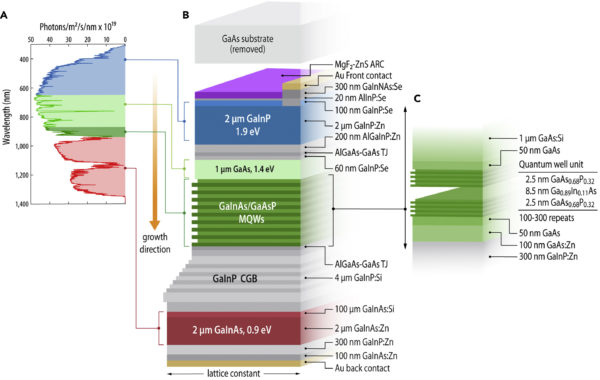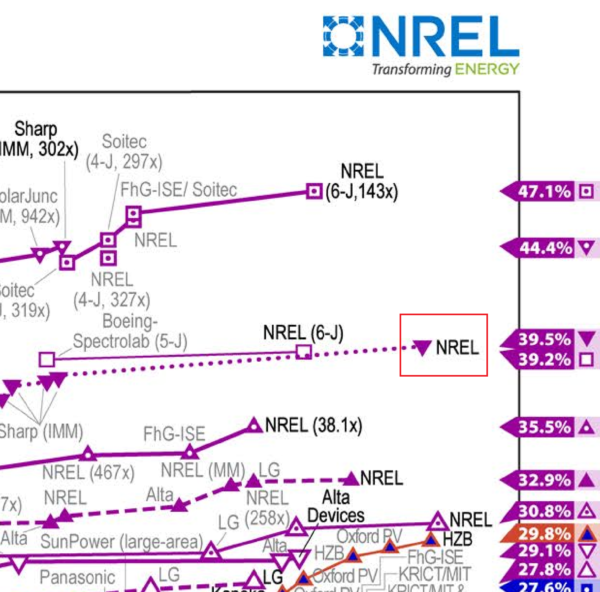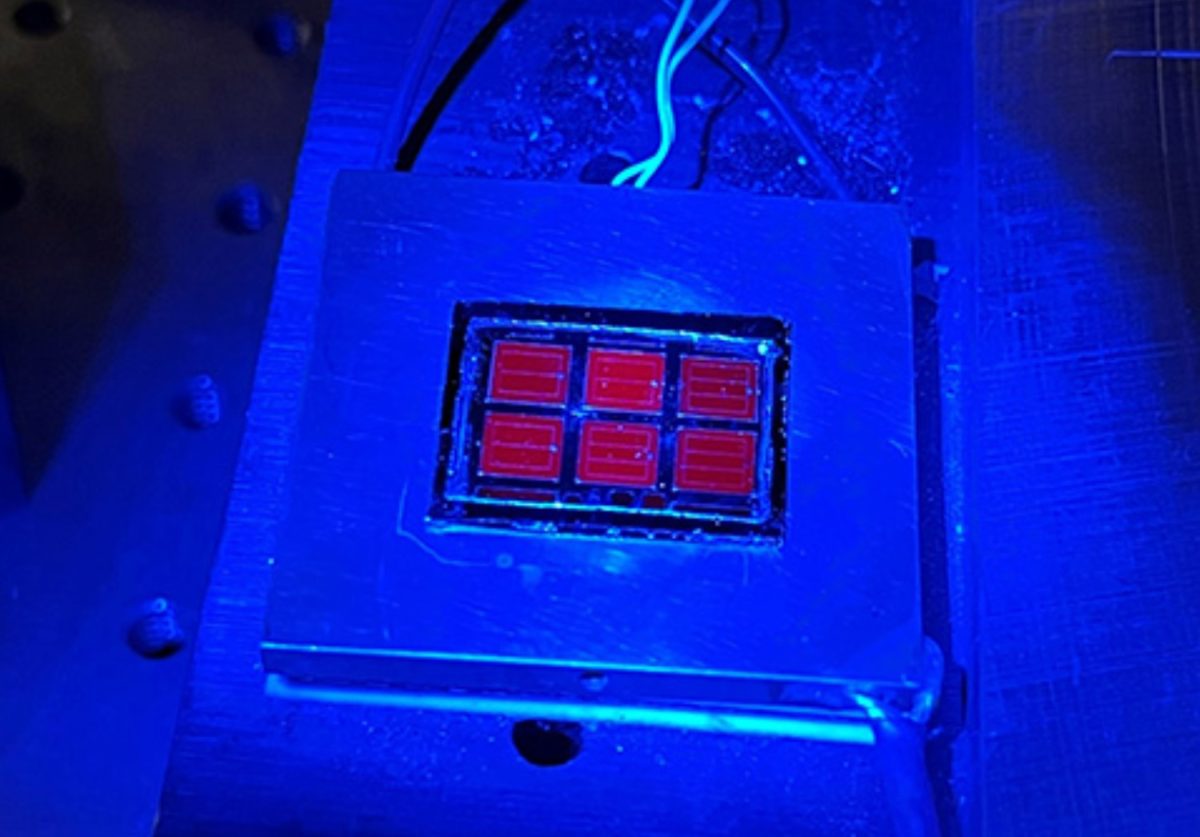The Department of Energy’s National Renewable Energy Laboratory (NREL) has set a new solar cell efficiency record in normal sunlight at 39.5%. The triple-junction solar cell was able to set this record through improvements to the middle layer of the cell via making use of new techniques for constructing quantum wells.
The High-Efficiency Crystalline Photovoltaics (PV) Group at NREL made the solar cell with hundreds of layers of materials, each optimized based off of prior iterations of solar cell technology over multiple decades of research and development on this product class.
The solar cell is composed of three different materials: the top junction is made of gallium indium phosphide (GaInP), the middle layer is made from gallium arsenide, (GaAs), which is surrounded by aforementioned quantum wells, and the bottom is lattice-mismatched gallium indium arsenide (GaInAs). These materials have been used in solar cells before, and dominate the space solar power market.
The prior record for standard sunlight solar cells was 39.2%, and while that is almost as efficient as this new record, that cell was a six junction unit. This solar cell, using similar materials, was able to increase generation efficiency by taking advantage of the advancing research in quantum well layers.

The authors noted that hundreds of the quantum well layers sit between the central layer and the materials above and below it. These wells modify how the electrons, energized by photons, are captured and moved through the solar cell into the solar panels’ circuit. During the experiment, the number of quantum wells was varied between 100 and 300, to gain the specific current versus voltage characteristics the researchers were seeking. The quantum wells have a thickness of five to ten nanometers, which increased the cumulative thickness of the middle layer – of GaAs – from 850 nm to 2.5 mm, respectively.
The main challenges of this product class is that it is very expensive, at $10 per watt, compared to 10¢ for standard solar cells, and the manufacturing is relatively slow compared to standard polysilicon solar cells. Also, considering the inevitable future of global solar domination, the material availability is limited.
For instance, the growth time of the quantum well region of the solar cell was 55 minutes, and the total growth time of the total cell was four hours. And while this is not entirely a fair comparison, a standard polysilicon based 250 MW/year manufacturing line seeks to move tens of thousands of solar cells per hour.

The high costs mean that these cells are used primarily in expensive markets. The most common market is space, as the International Space Station uses triple junction cells with over 30% efficiency. Cells of this style have also been used in yet to be released solar powered cars.
Without a doubt, these are among the most efficient solar cells ever designed, as can be seen by the cutout above from the famed NREL Research Cell Record Efficiency Chart. The outlined red box is the current record solar cell efficiency. The class of solar cells located above and to the left of the outlined cell set their records using concentrated sunlight via mirrors, and other techniques.
In previous research, the scientists noted that a theoretical 85% efficiency is possible for an infinite number of junctions at maximum sunlight concentration. However, using a variety of reasonable assumptions, conservative calculations suggest that a 62% solar cell efficiency could be achieved using sunlight that is concentrated 1,000 times.
This content is protected by copyright and may not be reused. If you want to cooperate with us and would like to reuse some of our content, please contact: editors@pv-magazine.com.









By submitting this form you agree to pv magazine using your data for the purposes of publishing your comment.
Your personal data will only be disclosed or otherwise transmitted to third parties for the purposes of spam filtering or if this is necessary for technical maintenance of the website. Any other transfer to third parties will not take place unless this is justified on the basis of applicable data protection regulations or if pv magazine is legally obliged to do so.
You may revoke this consent at any time with effect for the future, in which case your personal data will be deleted immediately. Otherwise, your data will be deleted if pv magazine has processed your request or the purpose of data storage is fulfilled.
Further information on data privacy can be found in our Data Protection Policy.